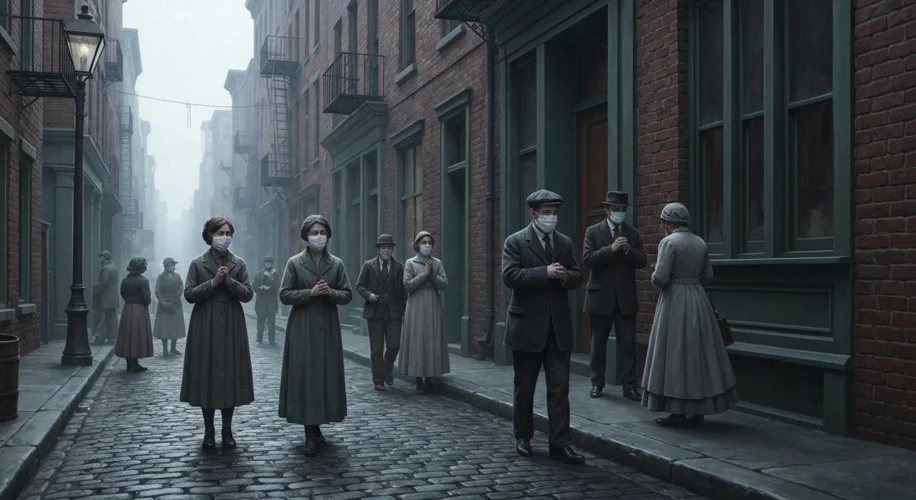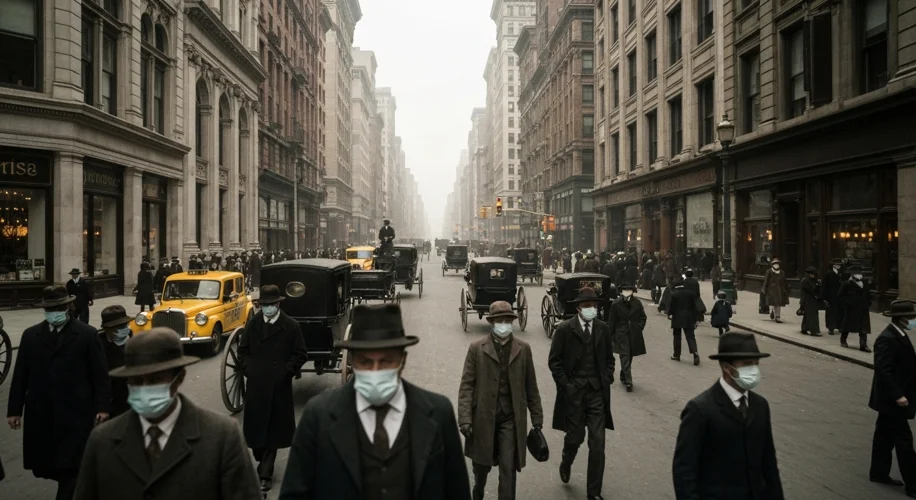The year is 1918. The world is locked in the brutal grip of the Great War. Across the ravaged landscapes of Europe, soldiers from every corner of the globe fight and die. But as the cannons roar and the trenches fill with mud and despair, a new, invisible enemy begins its insidious march, one that would prove more devastating than any battlefield.
It was an influenza strain unlike any seen before. Dubbed the “Spanish Flu,” though it likely didn’t originate in Spain, this virulent pathogen swept across continents with terrifying speed. In an era before antibiotics and advanced medical understanding, the world was ill-equipped to face such a foe. The pandemic’s arrival was stealthy, insidious, and utterly indiscriminate.
The first wave, in the spring of 1918, was relatively mild, a mere harbinger of the horrors to come. Soldiers, already weakened by the strains of war, became unwitting carriers, spreading the virus through crowded barracks and troop transports. It was the second wave, however, that unleashed true devastation.
Beginning in late August and early September, the virus mutated into a far more aggressive form. This strain exhibited a peculiar and terrifying predilection for the young and healthy. Unlike typical influenza, which preys on the very young and the elderly, this virus attacked those in the prime of their lives. Its symptoms were brutal: fever, chills, aching muscles, and a characteristic cyanosis, where victims turned a dusky blue as their lungs filled with fluid, leading to suffocation.
Imagine a bustling city street in America. People went about their daily lives, perhaps with a lingering weariness from the war. Then, almost overnight, the atmosphere shifts. Sickness spreads like wildfire. Public spaces – theaters, schools, churches – are shuttered. “Mask or go to jail” ordinances become commonplace in some cities. The constant fear of contagion hangs heavy in the air, a palpable presence as thick as the fog that might roll in from the coast.

One of the most striking aspects of the Spanish Flu was its uncanny ability to strike down healthy young adults. Doctors and nurses, accustomed to treating the frail, found themselves overwhelmed by the sheer number of robust individuals succumbing to the illness. Many were healthy in the morning and dead by nightfall. The speed and ferocity of the disease left medical professionals bewildered and terrified.
The global death toll is staggering, estimated to be between 50 and 100 million people – more than all the casualties of World War I combined. It infected an estimated 500 million people, a third of the world’s population at the time. Entire communities were decimated. Some villages in remote areas were wiped out entirely.
In the United States, the pandemic arrived in waves, hitting port cities like Boston and Philadelphia particularly hard. Boston experienced an outbreak that overwhelmed its hospitals, forcing the creation of makeshift infirmaries in public buildings. The city, like many others, implemented strict public health measures, including the closure of schools and saloons, and a ban on public gatherings. Yet, the virus continued its relentless spread.
The war effort itself was also impacted. The movement of troops across borders and oceans served as a powerful vector for the virus. Some historians argue that the weakened state of the global population, both physically and psychologically, due to the war, made them more susceptible to the pandemic’s onslaught. Conversely, the pandemic itself may have even hastened the war’s end, as armies struggled with widespread illness among their ranks.
Beyond the immediate devastation, the Spanish Flu left an indelible mark on society. It led to profound changes in public health practices, influencing the development of organized health departments and the dissemination of health information. The experience fostered a greater appreciation for epidemiology and the need for international cooperation in combating infectious diseases.
The pandemic also had a significant impact on the global economy, disrupting industries and supply chains. The loss of so many working-age individuals led to labor shortages and had long-term economic consequences.
The Spanish Flu stands as a stark reminder of humanity’s vulnerability in the face of nature’s power. It was a global catastrophe that underscored the interconnectedness of the world and the critical importance of public health preparedness. Even today, as we navigate our own health challenges, the echoes of 1918 serve as a potent lesson in resilience, adaptation, and the enduring fight against the unseen enemy.
It’s a chilling chapter in our shared history, a testament to the devastating power of a microscopic organism and the extraordinary resilience of the human spirit in its wake.

